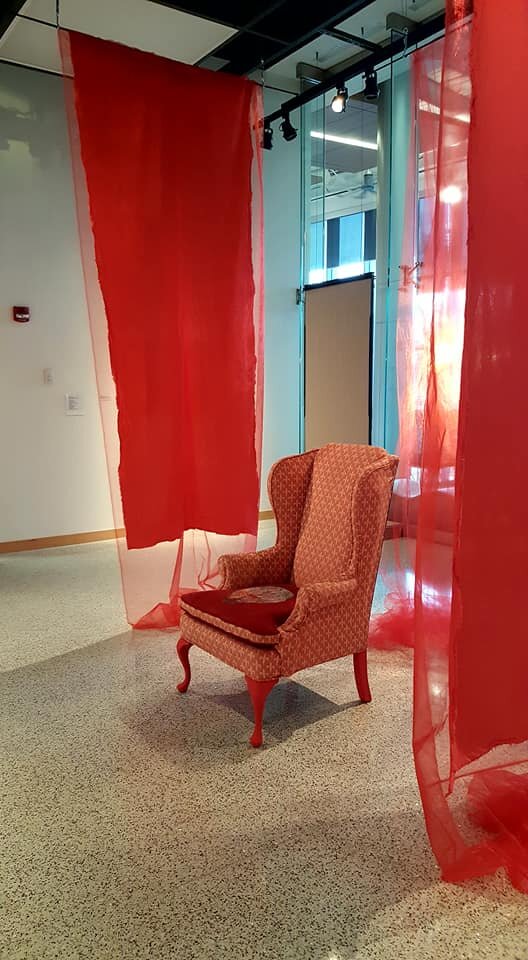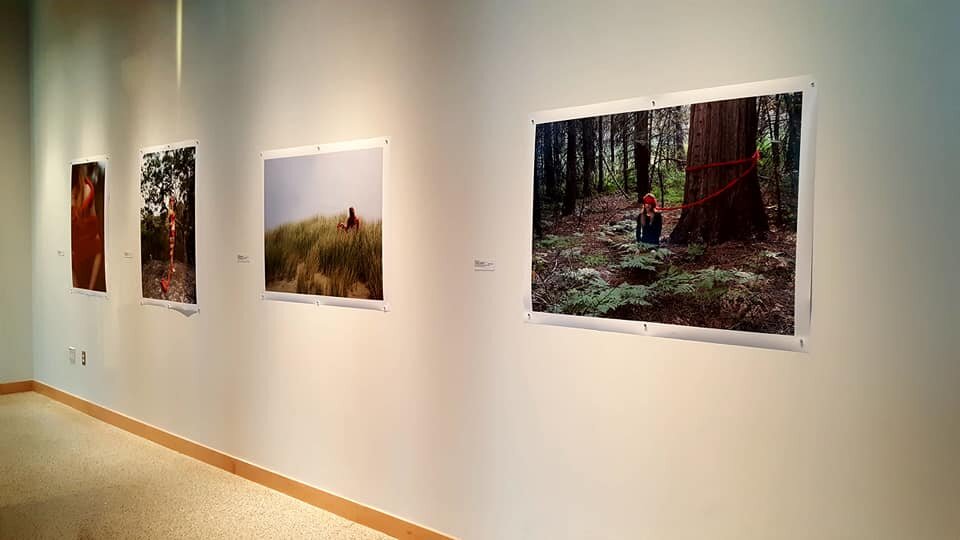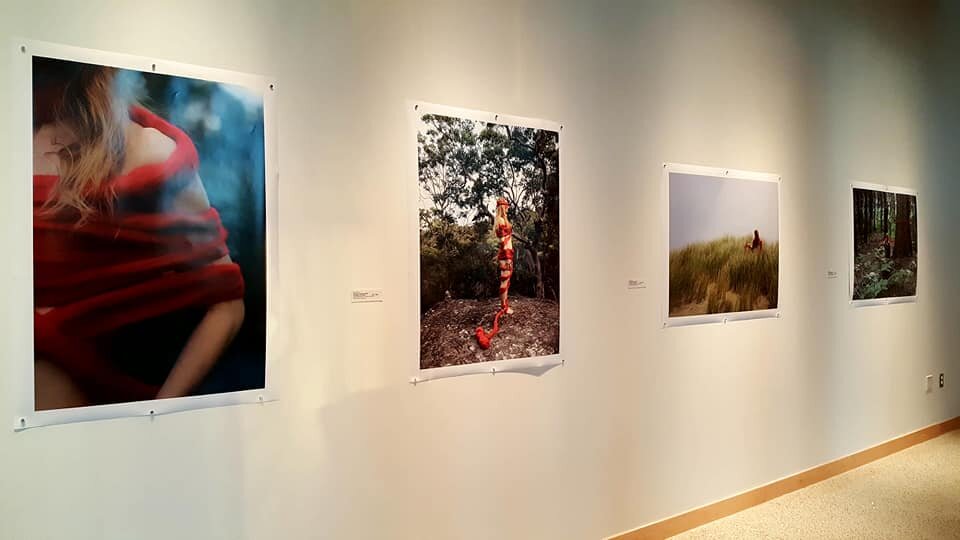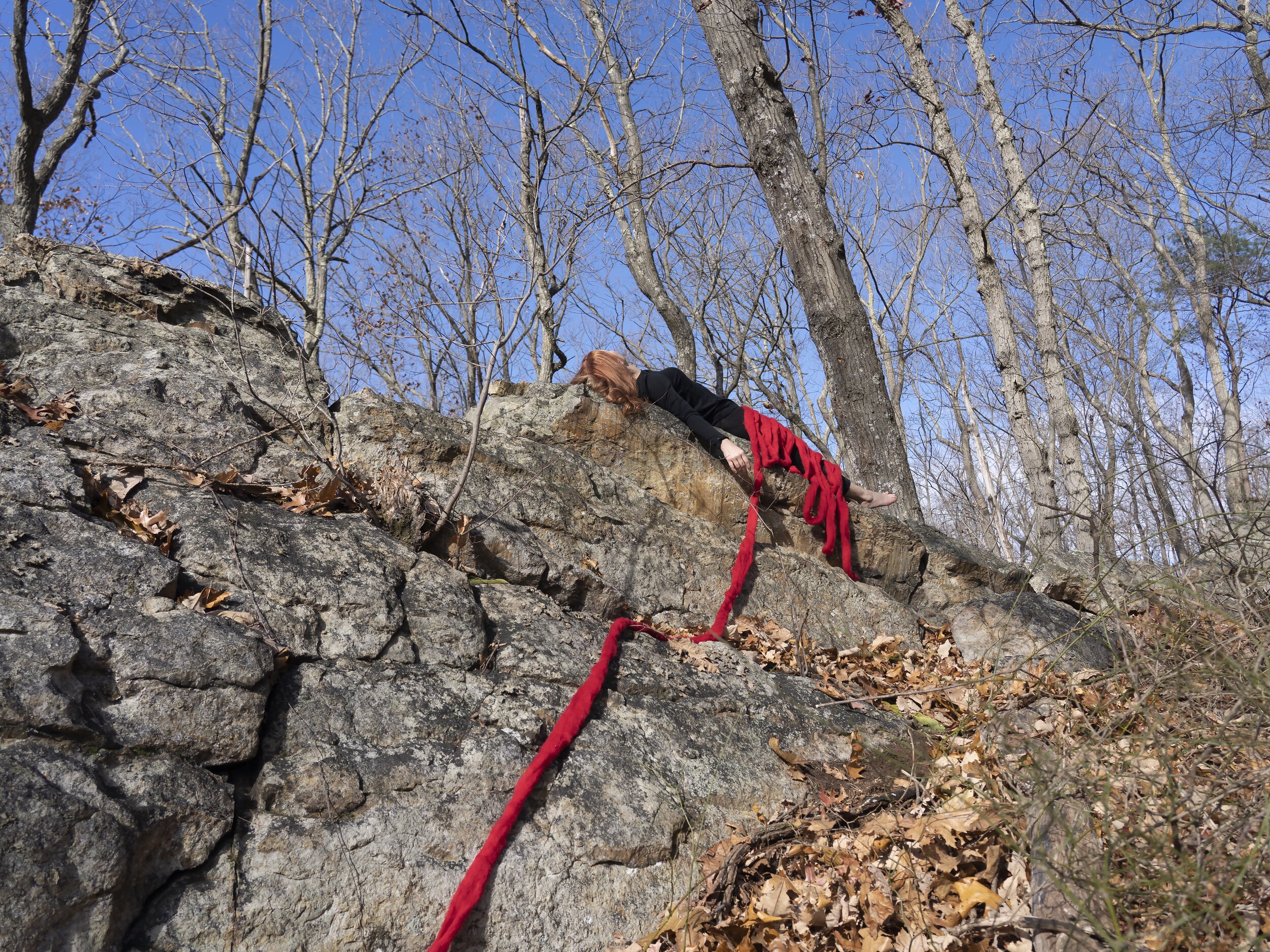...but the so little that had been left was so much, 2019 - Present
In my research for Mnemosyne (2016), I became more interested in the essential condition of memory to creativity.
Moving forward with this realization, I began a collaboration with neuroscientists at the Howard Hughes Medical Institute (HHMI) who research short and long-term memory via the neurofunctions of the insect branin. These functions rely on a visceral connection to their environments.
The first photos were made in June 2019 beginning in Australia, where a series of devastating wildfires would later take place. More photos were made on the east and west coasts of the United States and future images will be made in other countries. The images are performance-stills of interactions with these unique environments. They surround the Mnemonic (Sound) System, a sound chair emitting recordings of wildlife Devine collected in these environments - from the Blue Mountains outside Sydney and later California and Virginia. The effect is a sensory installation that bridges the fascinating and elusive processes of memory with an urgent narrative to our fading ecosystems.
The final installation will include mixed-media prints/drawings onto large sheets of handmade paper that were produced at Reading Road Studio in July 2020. Images will record neuron structures and the nomenclature affected by various population loss. These ongoing performative interventions recorded in photography and sound, combined with printmaking and installation, seek to activate memory as a process connected to the sensory overlays stimulated by unique environments upon which we are collectively dependent with other species.
+++++++++
Notes from an artist’s process
While conducting research for a piece I would perform in the Venice Performance Art Week, I found a book about the amount of Venetian art that had been lost to wars and floods over the centuries. From it, a quote stood out: “There is so little left in the world, but the so little that had been left was so much.” I felt it also applies to what we are losing as a result of climate. What can we retain in our memories when important things are disappearing….
What I ended up doing for my solo piece in Venice was an earlier work “I can remember things before they happen.” Another quote, this time from Alice in Wonderland, that begins with “It’s a poor kind of memory that only works backward.”
Issues of what and how we remember have been floating in my head since I completed Mnemosyne, when I thought I was only caught up in the feminist concerns of deconstructing the “muse.” I discovered that the artistic process has been anchored to memory since the Greeks. Therefore, currency of the term ‘memory’ repeated over and over again by artists until it loses real meaning, actually has some merit beyond any mythos of creativity.
After my collaboration with scientists, I now understand that memory works forward rather than back. Sight, touch, sound, and especially scent are the tools of memory. They provide a pathway forward to saving species under threat, and help us faintly hold on to what will inevitably be lost.







